[ soundtrack : ‘What Keeps Mankind Alive’ - Tom Waits - Brecht / Weill ]
***
This post is too long for email — open in browser for full length.
***
You didn’t really think we were finished with the Vicar’s windows, did you?
There are still a couple of things to do before we can leave well enough alone. Having come this far we might as well see it through. Let’s get it done.
Last time we left off with the sticks spliced and glued back together:
The old screw-holes from the corner-irons will probably no longer align with the hardware, the pieces having shifted position slightly during the process. I prefer to remedy this by filling the old holes with epoxy from a syringe, but you could also bung them. The old, washed-out wood will soak up the glue to an amazing extent, so you have to keep refilling the holes as they ‘drink’. As a bonus, the surrounding wood will be fortified and hold the screws better.
When the glue has cured it’s time to get to work adjusting and prettifying the frames. You might as well begin by planing the glass-rebates so they meet at roughly the same level in the corners. The glazier will bed his panes in putty, so you can afford a small discrepancy, but honour demands a pretty meeting of planes in the corner, and the glazier will be happy to work with you.
Next is flattening off the ‘face’ of the frame — both sides. Don’t get carried away! “Good enough“ is definitely the name of this game, and it doesn’t have to be dead flat, either — the latches will pull it tight.
No. 6 for general flatitude, no. 3 for minor adjustments.
Break any sharp edges you’ve made so the paint will stick …
… and make sure to give the glass-rebate a small rounding-over: It is along this edge that the glazier will drag his knife as he smoothes the putty. Any irregularities here will translate to visibly irregular putty-work.
Now we can clamp the frames upright and get to work on their edges.
Old windows like these were often made of fairly green wood (not well dried), but will have dried out and shrunk over the decades. As a result, the open-slot joinery tends to protrude a millimetre or two at the corners, especially after you’ve had it apart, gone over it and clamped it tightly back together.
A suitable saw and a sharp plane will sort that right out.
Now is also a good time to clear out any hinge recesses that might have been spliced over.
When mounting the hinges again, I take care to enter the old screws by hand (by sensitive ‘finger-power’) so that I can feel them entering their old threads. The surrounding wood is degraded and weak, so it’s worth avoiding the screws cutting new threads inbetween the old ones. You can also fortifty the old holes by injecting some water-thinned PVAC-glue into them; this will soak into the wood and strengthen it. PVAC does not cure as hard as epoxy, so better suited to this operation.
I keep a small tub of grease that I apply to the hollow hinge with a Q-tip. Please observe that I’ve refrained from making any lewd and childish jokes here. This is a wholesome, family-friendly blog — at least when I’m sober.
Mounting the corner-irons is a piece of piss; place hardware in position by eye, mark out holes …
… and pre-drill for screws. Two diameters — thickest first! — you’ll soon find out why :-) And by-the-bye; If you’re interested in the sort of Scandi hardware I’m using here, you might want to investigate this web-shop — no affiliation or sponsoring, I just stumbled across their site on my ramblings … they might ship internationally. Me? I have a shop literally up the street selling all manner of ferrous goodness :-)
Taking a leaf out of the boatbuilder’s book, I like to mount the hardware seated in an appropriate type of putty, leaving no space for rainwater. In this case I used some leftover painters caulk (acrylic latex). I save time by using a drill to drive the screws almost home before tightening by hand.
There is a certain hydraulic frisson to be found watching the goo ooze out as you tighten it down. Clean up with a small spatula and a damp rag.
As if I’d done it myself …
Frames are now ready for the glazier and the painter …
… but it’s best to check the fit first.
***







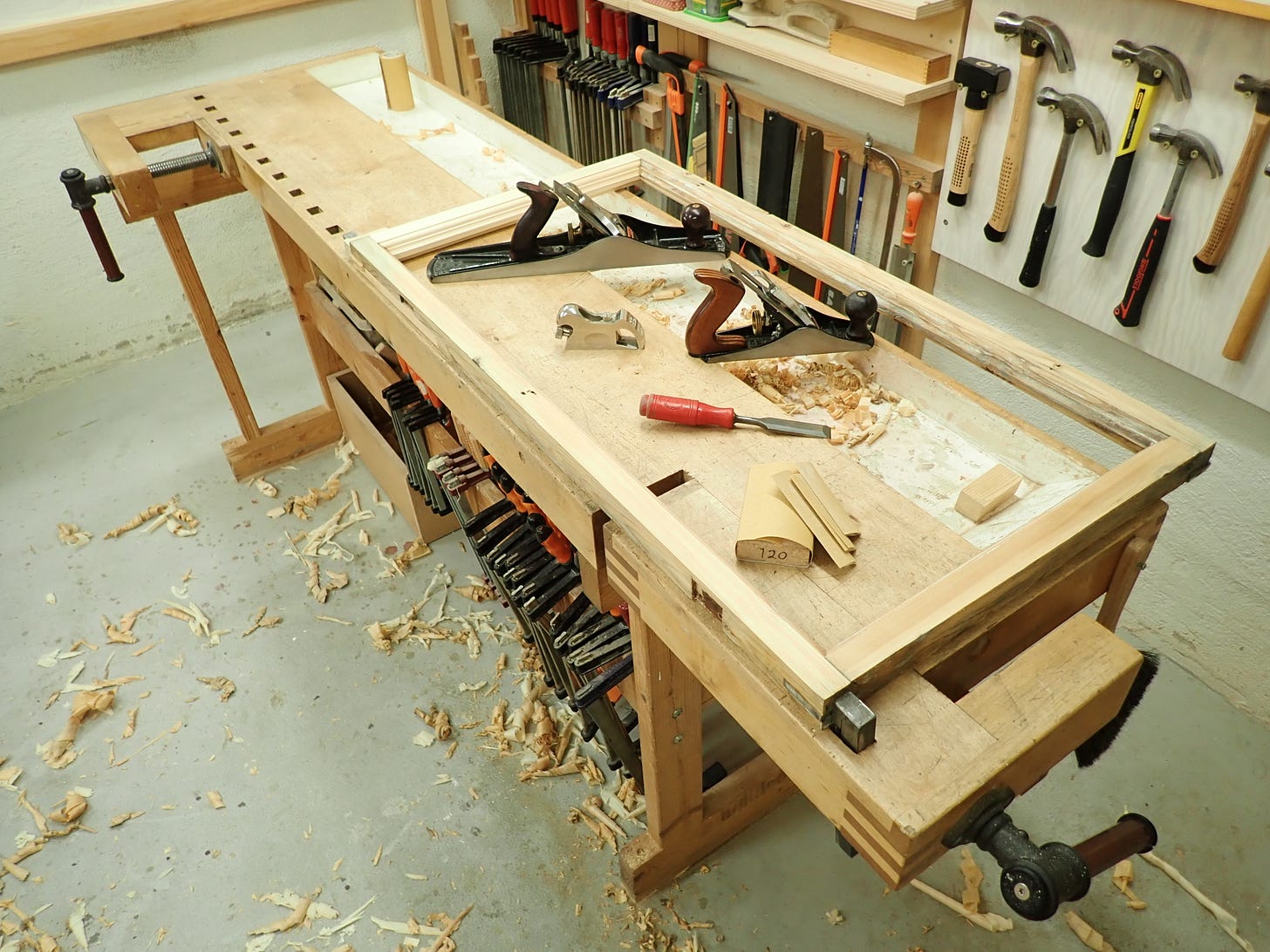
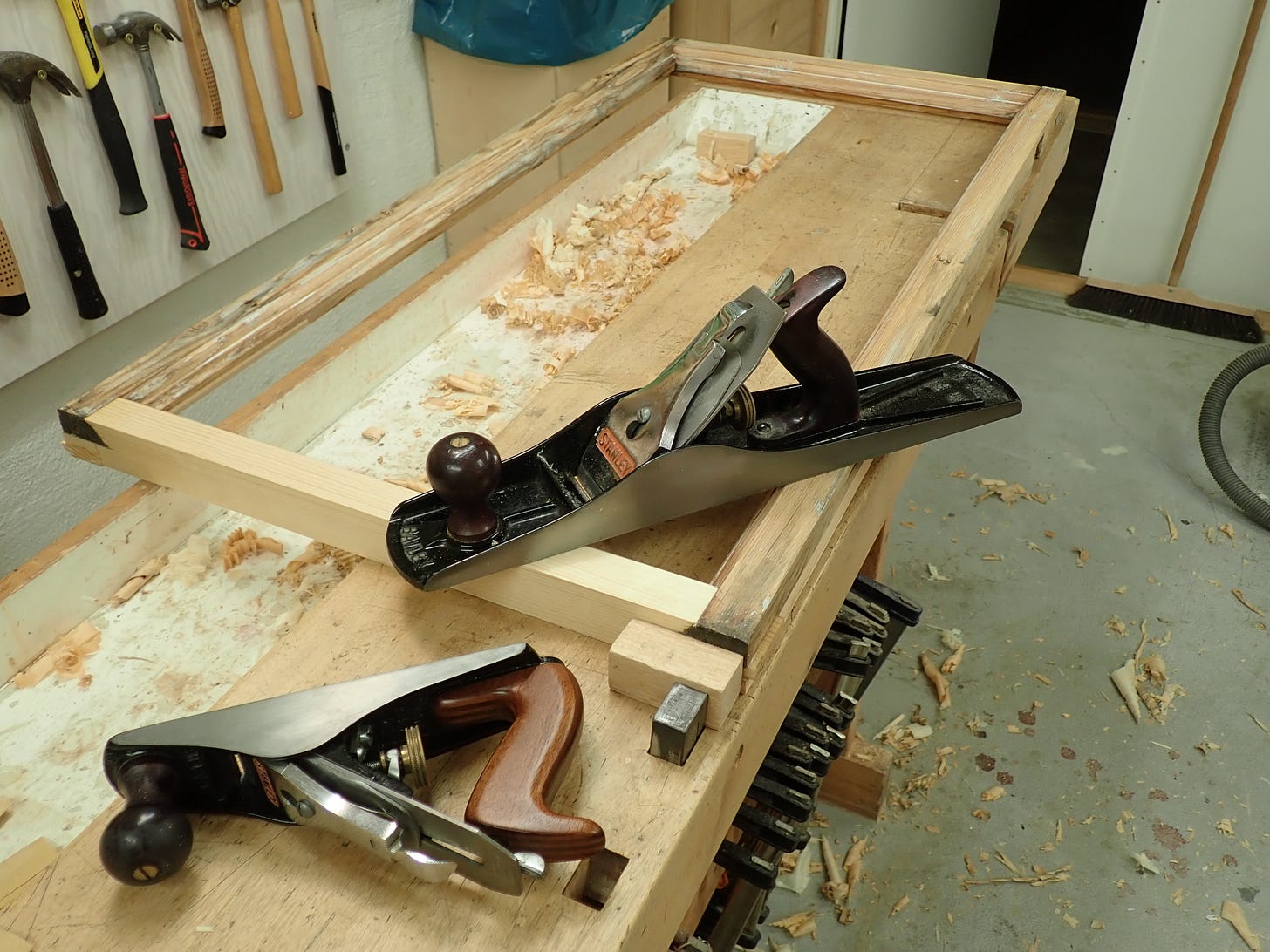
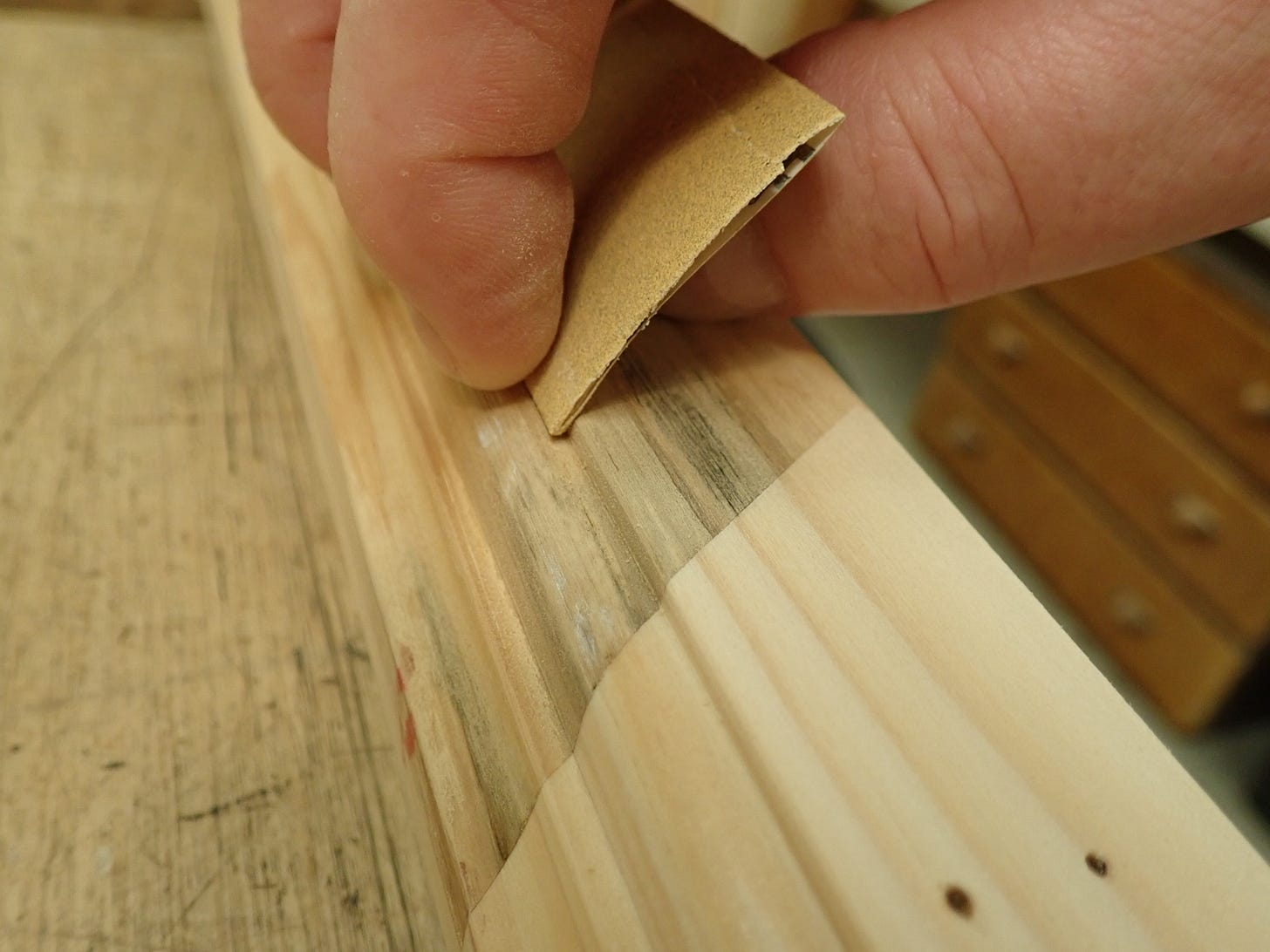
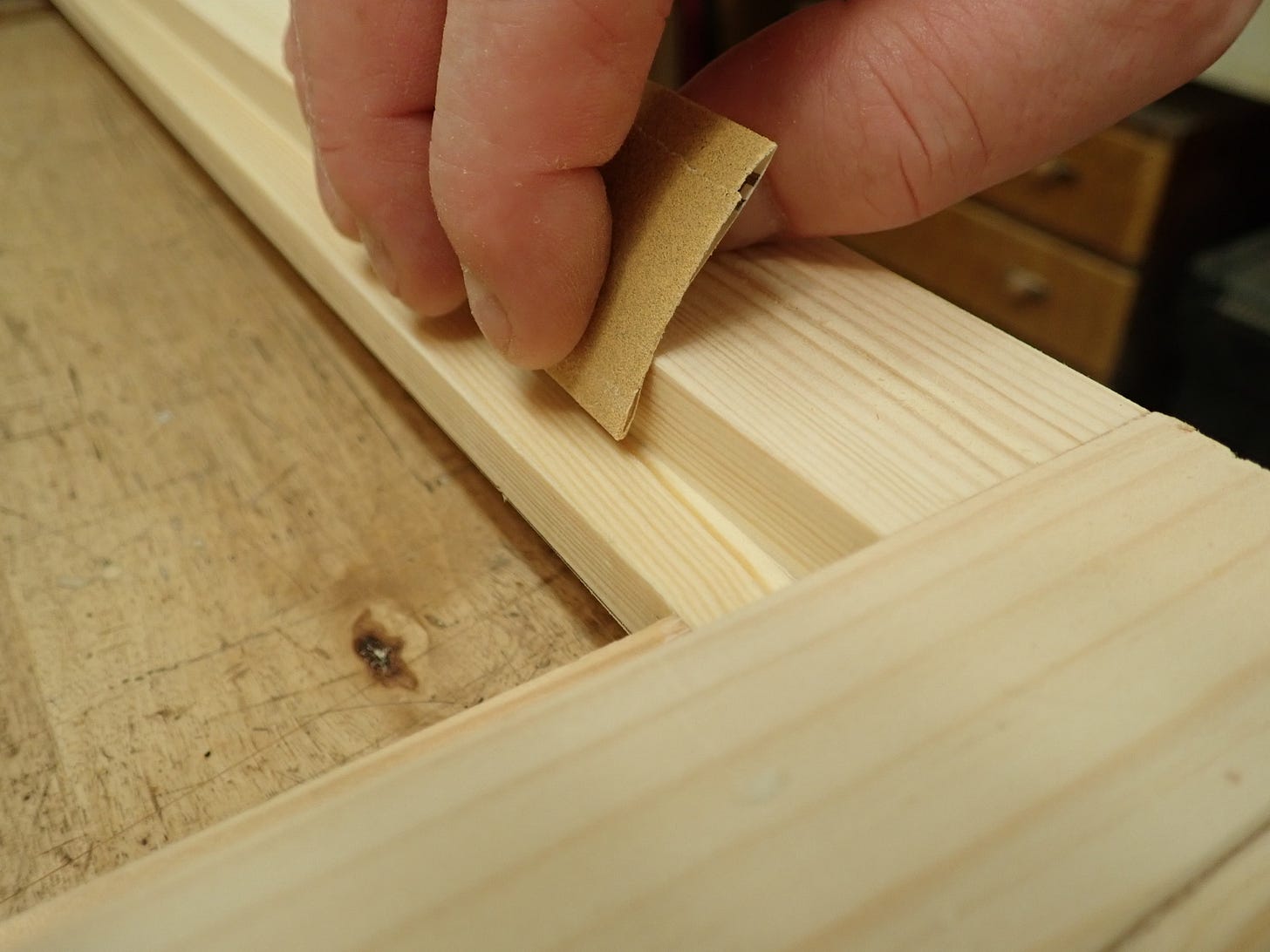


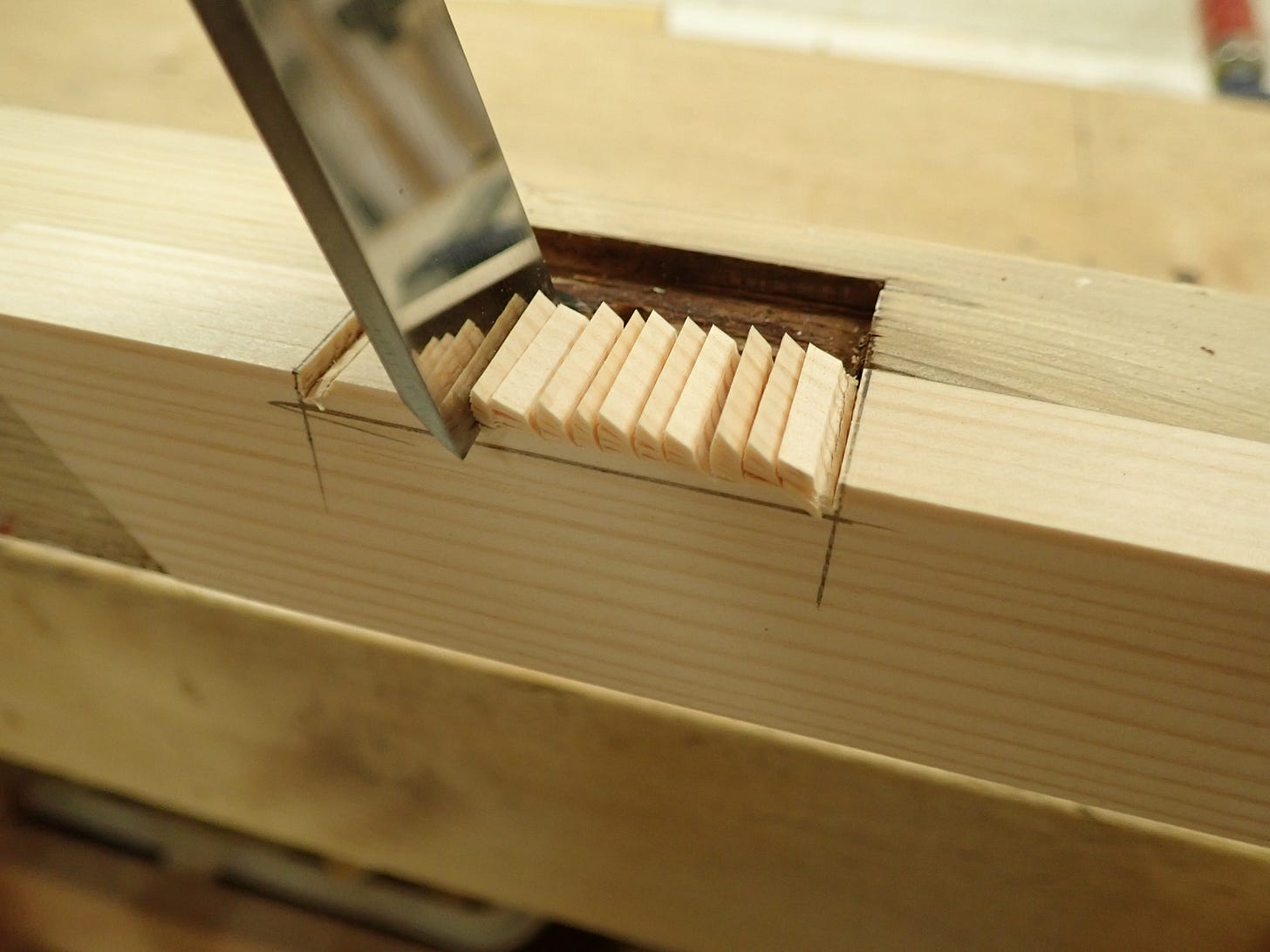
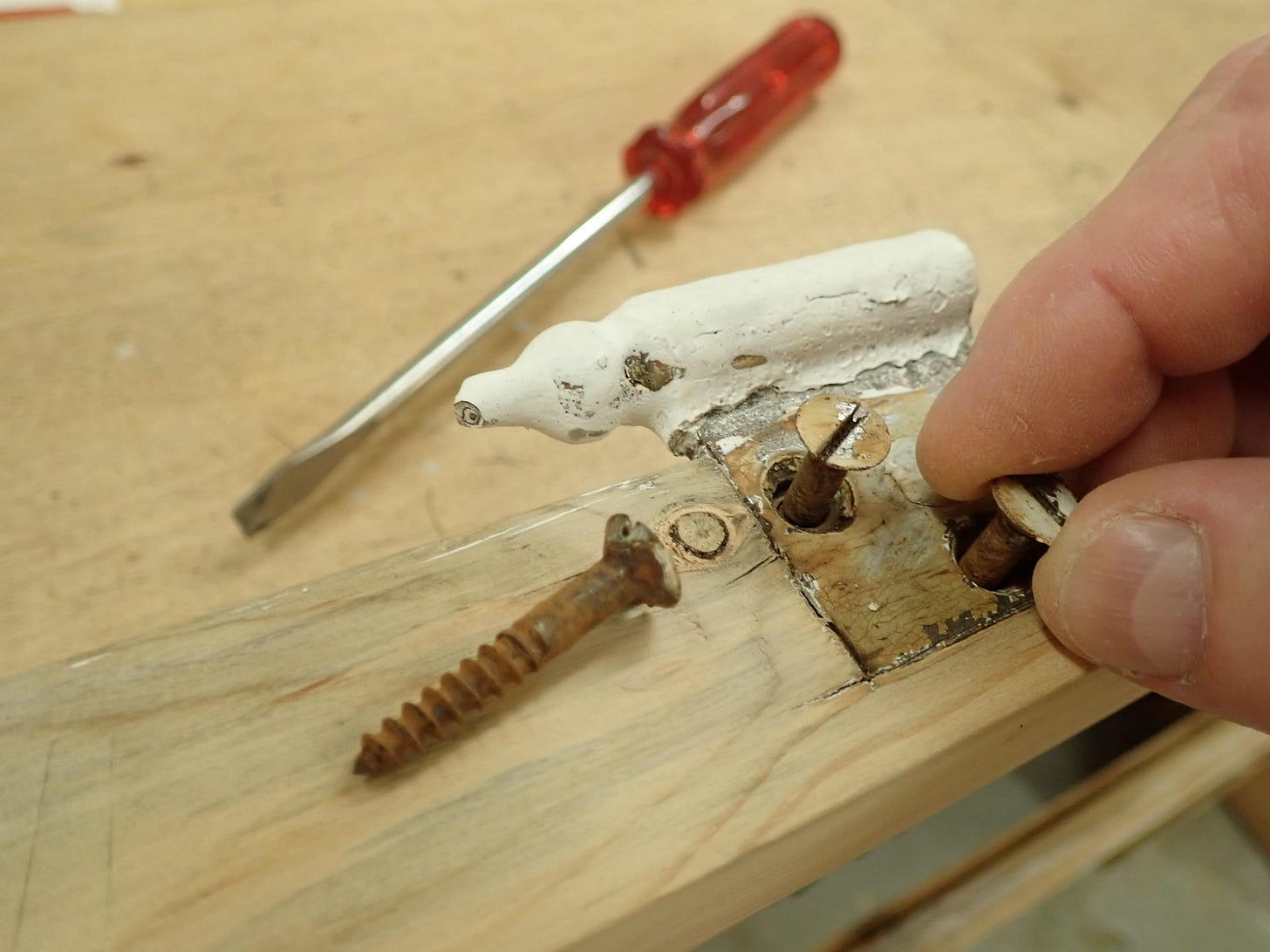
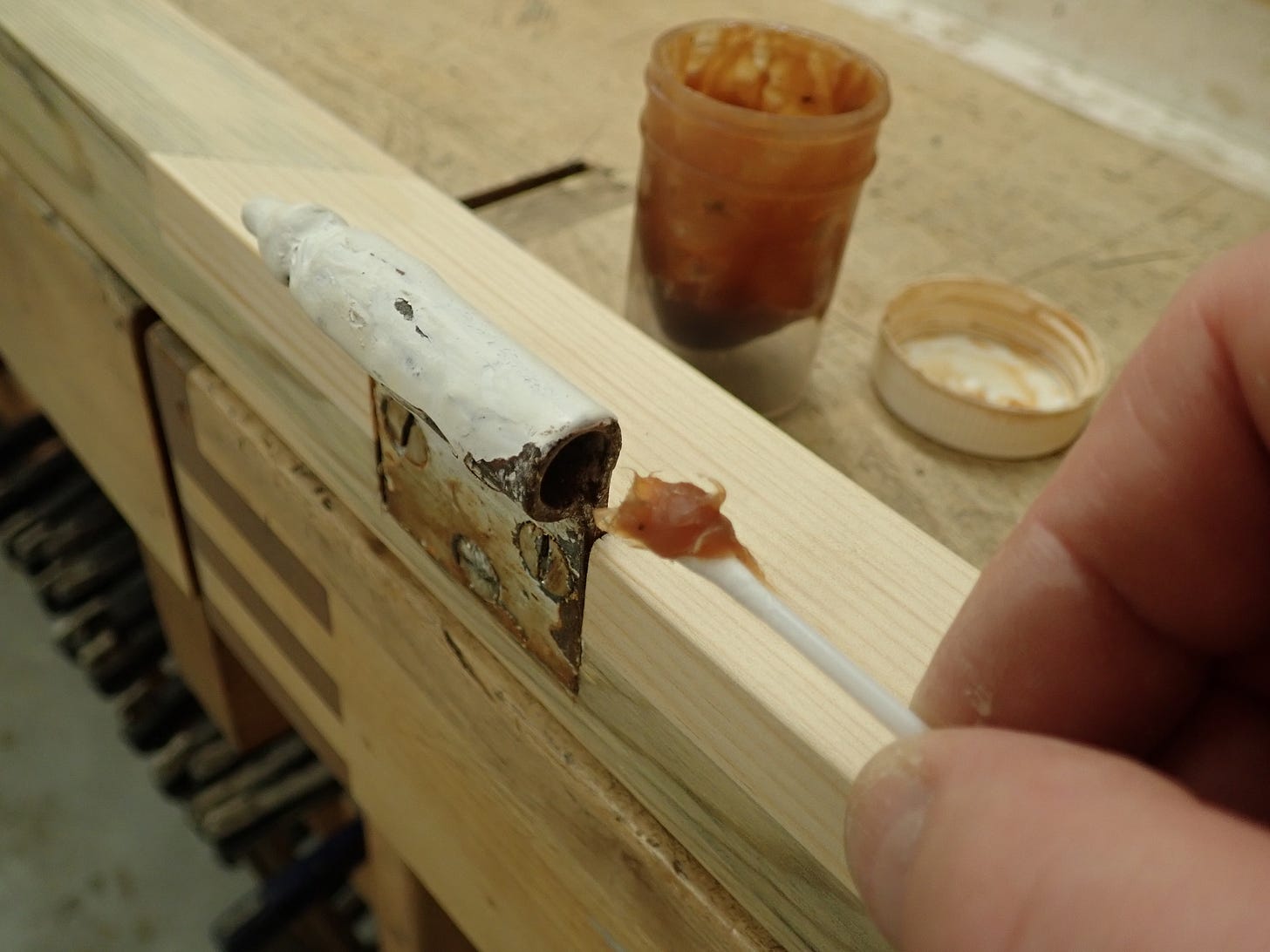
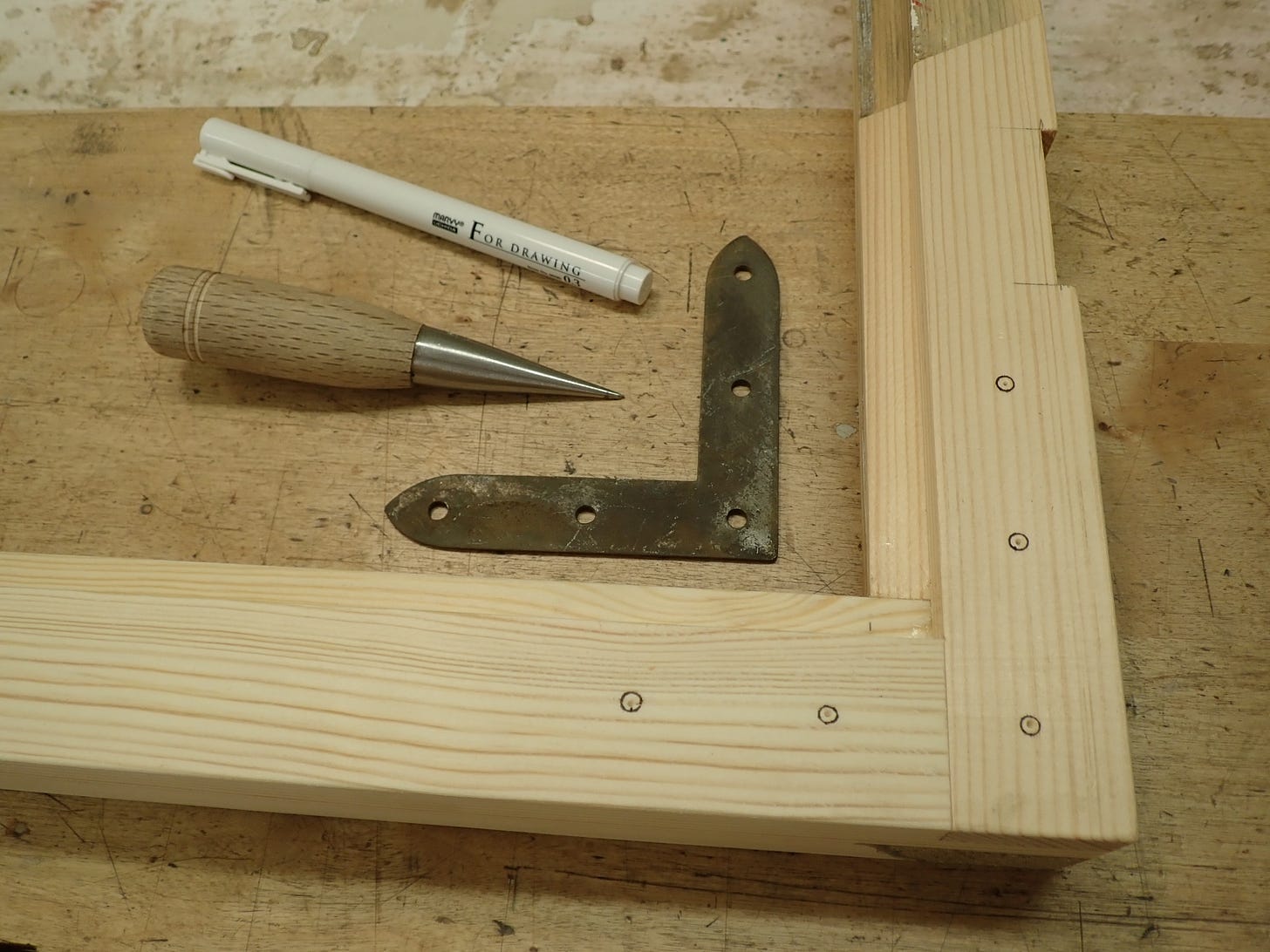
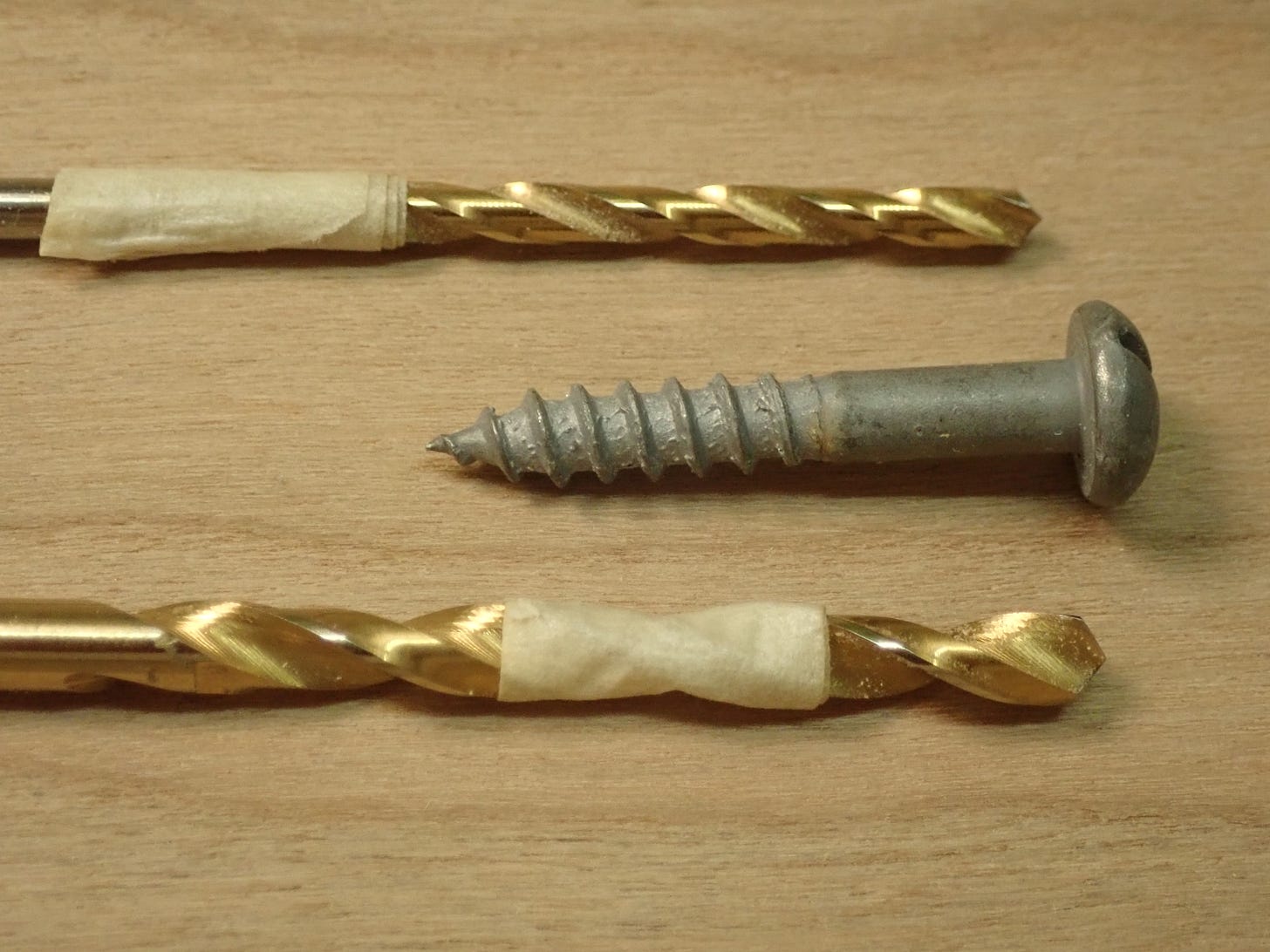
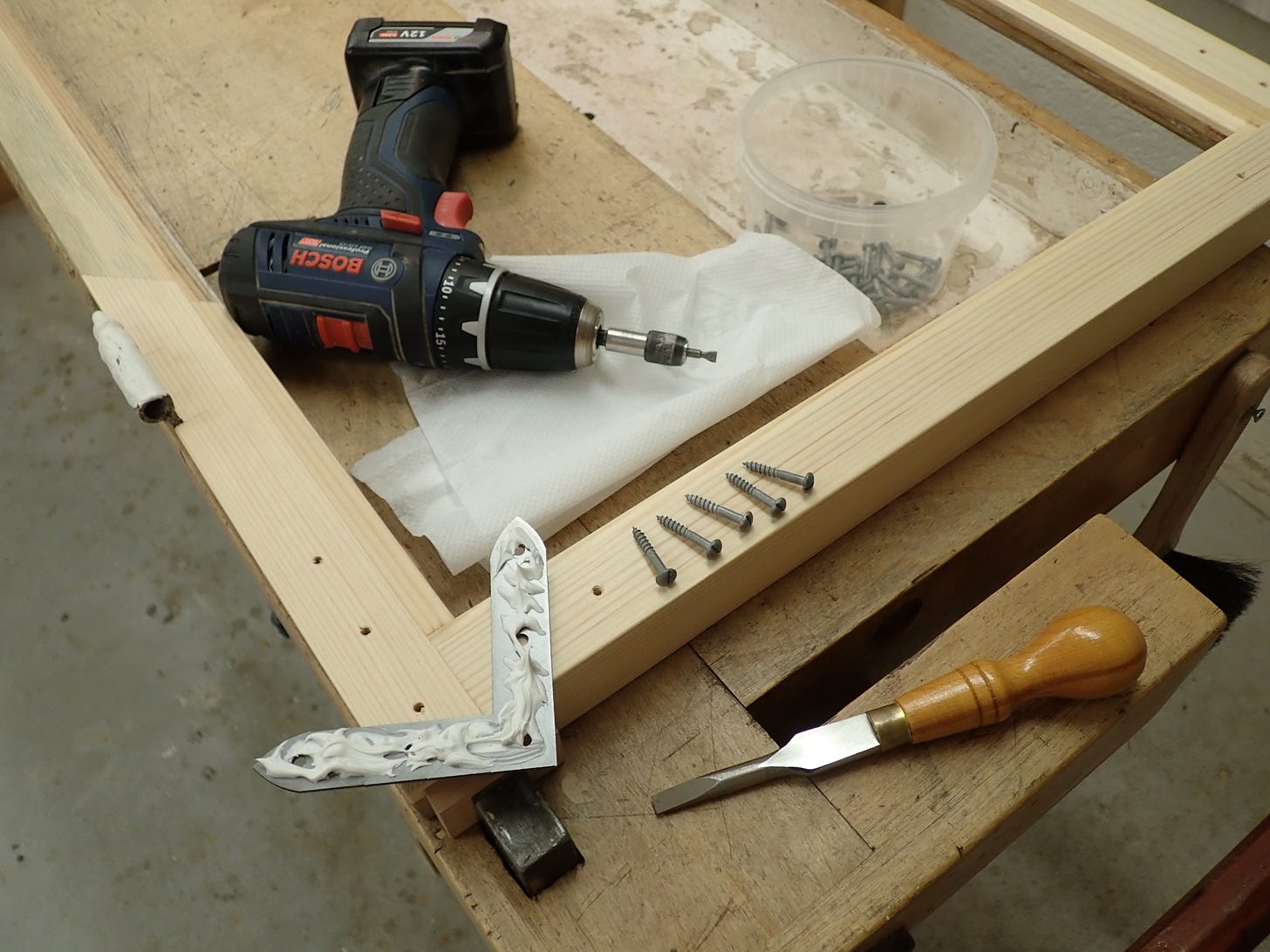
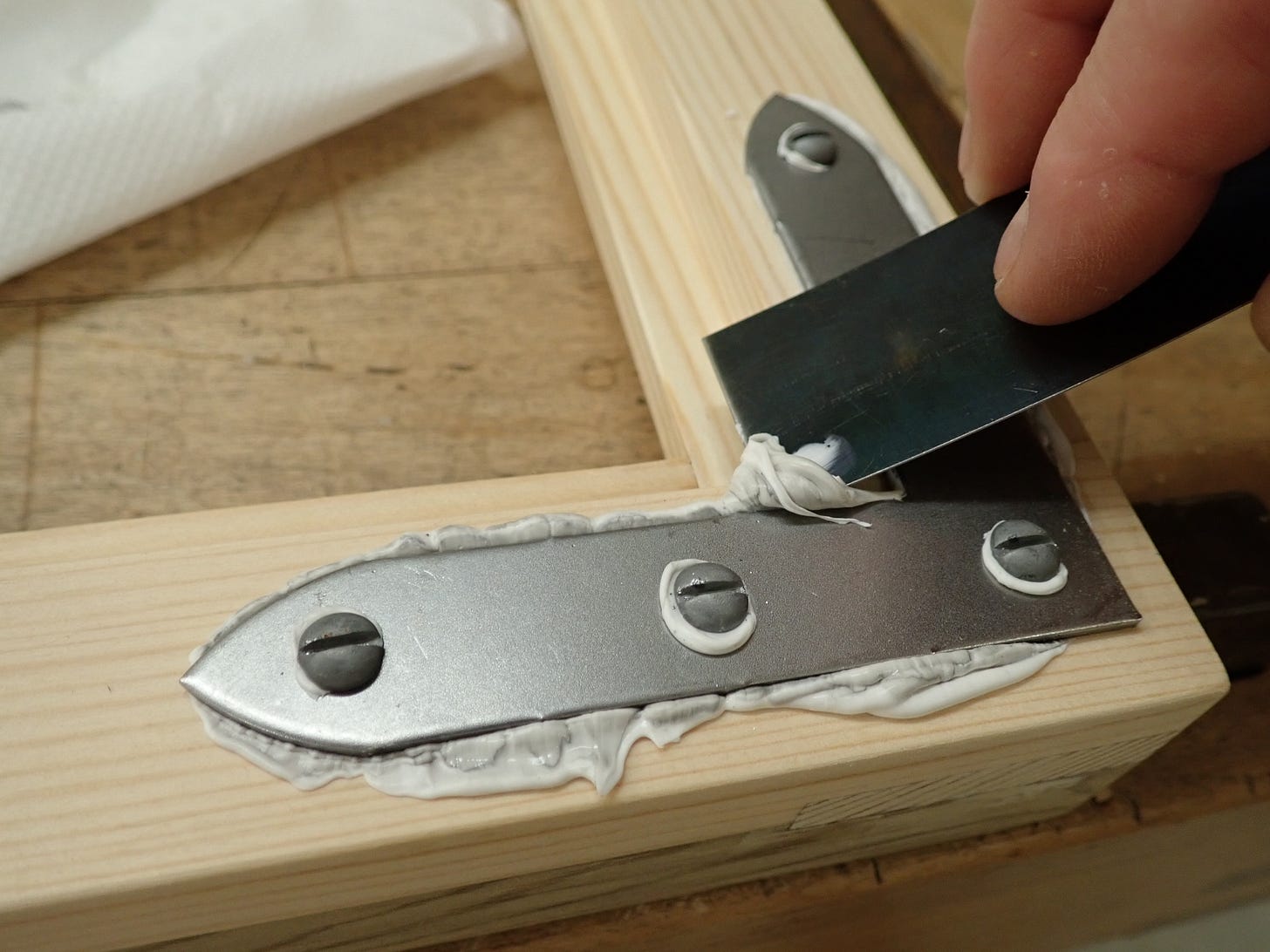

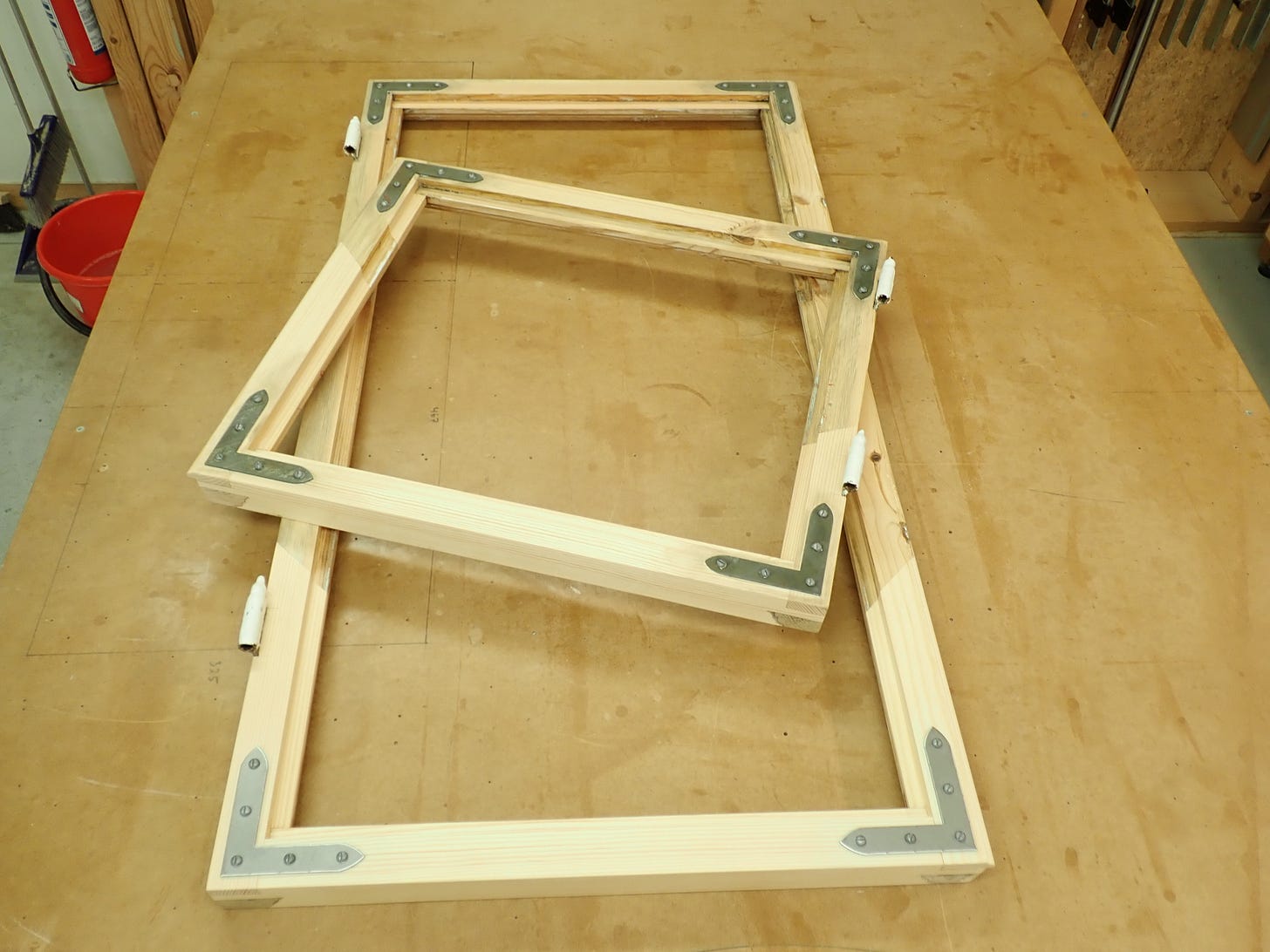

I enjoy your woodwork and your writing .
This guy sure likes windows!